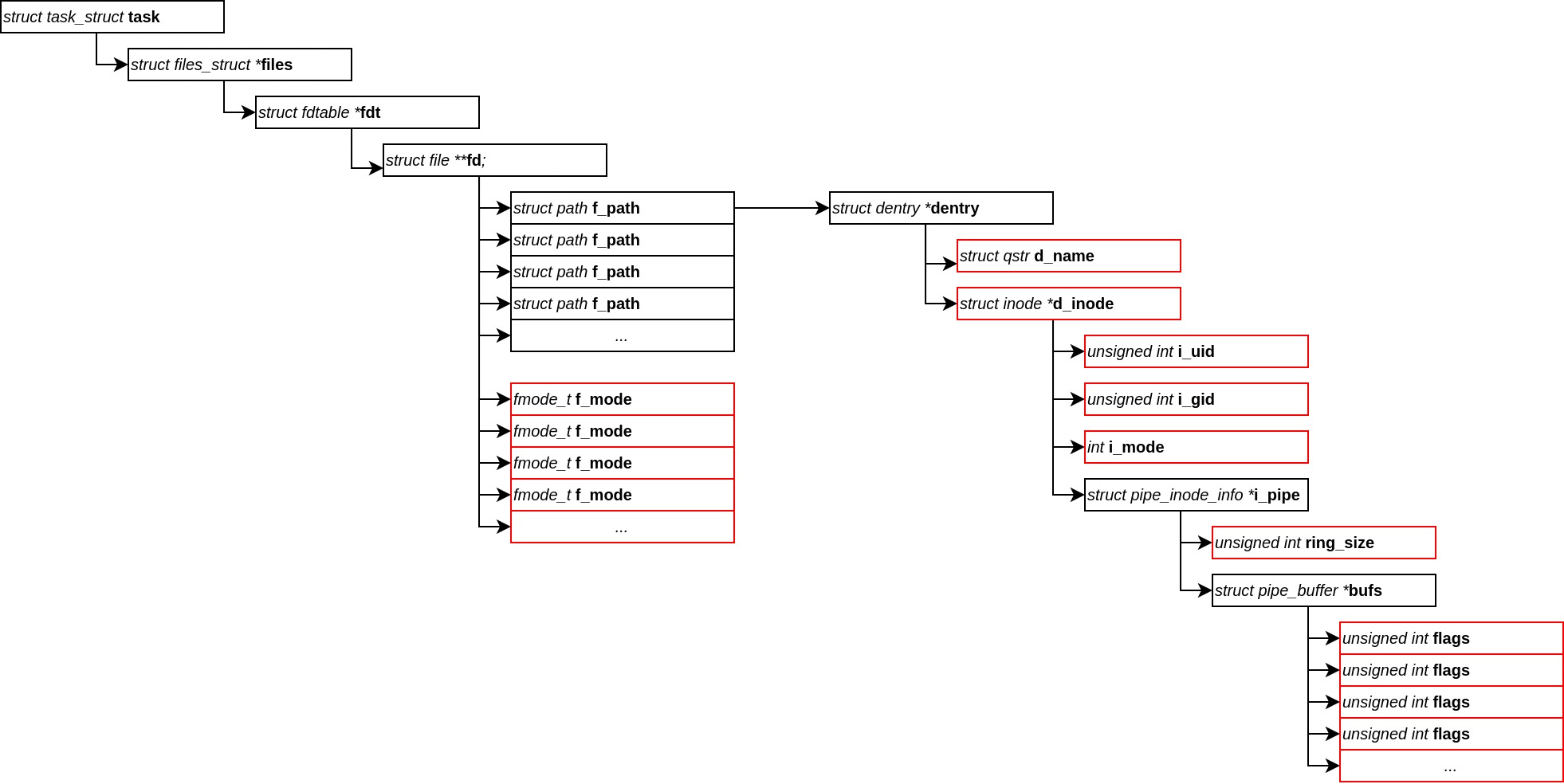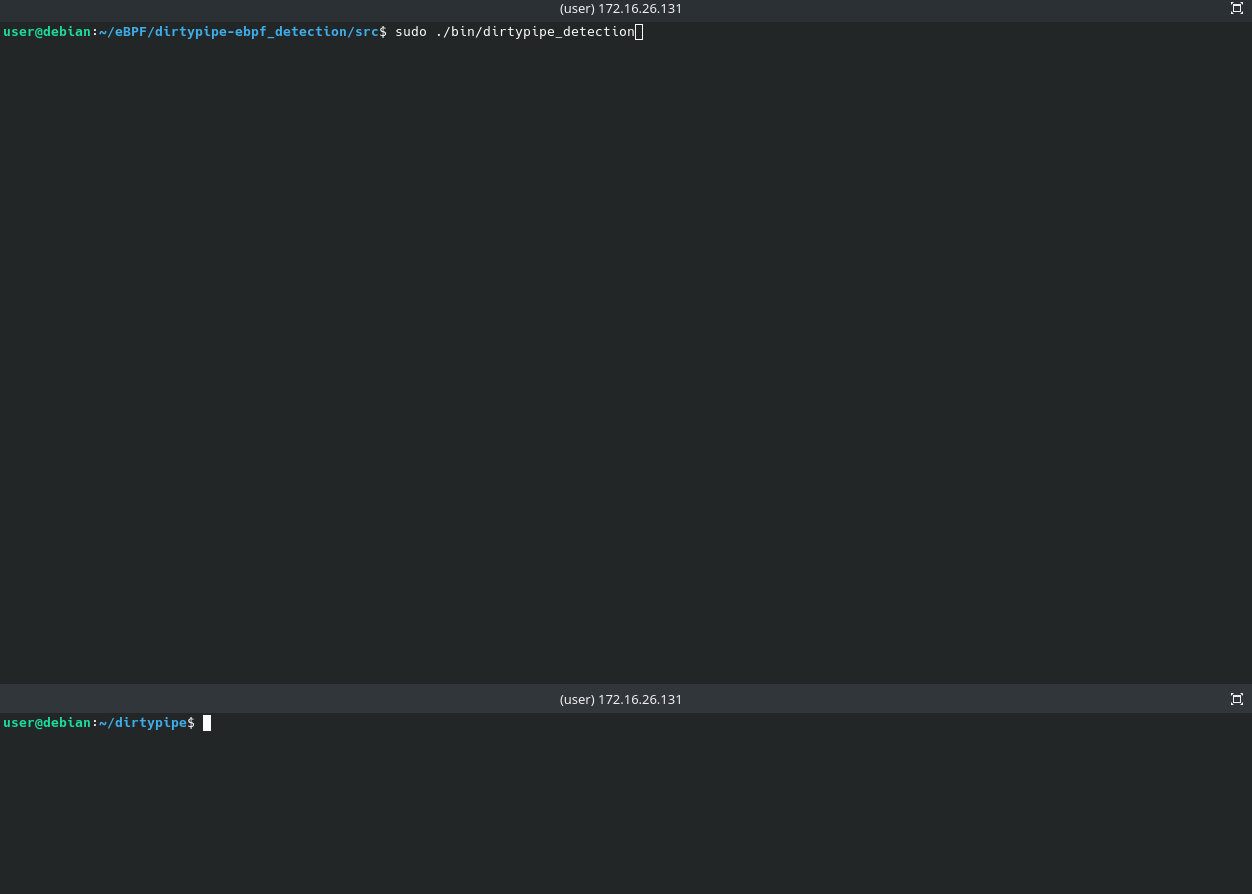CVE-2022-0847, aka Dirty Pipe, was first reported by Max Kellermann in February 2022. This vulnerability allows to overwrite any read-only file, including root-owned ones, from any unprivileged user. As you can imagine, the exploitation of Dirty Pipe is a wide open door to privilege escalation in a pretty straight forward and clean way… In fact, Dirty Pipe is so clean that it looks like it was a legitimate feature and that Linux was meant to work that way. It affects every Linux kernel since the version 5.8 and was fixed in Linux 5.16.11, 5.15.25 and 5.10.102. Max Kellermann wrote a great article about his discovery on his blog which I strongly recommend if you want to learn more: dirtypipe.cm4all.com.
So how could we detect exploitation of CVE-2022-0847? 🤔
Dirty Pipe being mostly about the page cache, pipes and splices, we knew we had to monitor syscalls. We first thought about Auditd, a built-in Linux kernel feature made to monitor syscalls, file access, and more. Auditd is a nice tool since you can filter properties such as argument values or permissions. But would it have been applicable to our case? Well, let’s think about it: 🔍
- Could we have hooked open()? It’s a very common syscall, and the argument could have been any file… ➤ No ❌
- Could we have hooked pipe()? Hooking a simple splice() doesn’t make sense… ➤ No ❌
- Could we have hooked write()? That wouldn’t have helped either, writing in a file descriptor is completely normal… ➤ No ❌
- Could we have hooked splice()? That’s interesting! Let’s look at splice()
arguments:
splice(int fd_in, off64_t *off_in, int fd_out, off64_t *off_out, size_t len, unsigned int flags);. What does Dirty Pipe do? fd_in is a file, fd_out is a pipe, and len is above 0. So first, splicing a file and a pipe isn’t necessarily something bad. Second, splicing a length above 0 is totally normal. Third, a file and a pipe are file descriptors, fd_in and fd_out are integers equal to 3, 4, 5, 6, etc… So we wouldn’t even be able to see the difference between file descriptors. ➤ No ❌ - Checking if the
PIPE_BUF_FLAG_CAN_MERGEis set in the page? Don’t even think about it with Auditd… ➤ No ❌
“it looks like it was a legitimate feature”, well this was kind of a problem for us, how could we detect evil behavior if every single syscall seems legitimate?
Well, Auditd wasn’t the solution. We also tried SysmonForLinux, but it was still pretty new at the time, and wasn’t convincing.
And then, a colleague suggested the tool. The one that was going to allow us to detect this filthy exploit: eBPF 🐝.
eBPF is a technology made to execute code between userspace and the kernel. It supports user probes, kernel probes, but also tracepoints! With that, every single time a hooked system function is called, the program running at the kernel/user space level will be in capacity of manipulating it’s arguments, reading structures, checking the return values, etc.
Thanks to eBPF, we could have done syscall correlation, but it would have been very slow, without mentioning the problem of memory management in order to keep a trace of all the calls by PID… So we had another idea 💡:
- Hook the splice() syscall
- Get its fd_in and fd_out
- Get as much information as possible thanks to the
bpf_get_current_task()eBPF helper and itsstruct task_struct(Unlike Auditd, this allowed us to check the file descriptors properties) - Check if fd_in is a file
- Check if fd_out is a pipe
- Check if fd_in is read-only
- Check if the last page buf ring has the
PIPE_BUF_FLAG_CAN_MERGEflag set (Thanks tostruct task_structagain) - Return the properties
The big part of this detection is the navigation through the struct task_struct in order to get the right information :

Technically, if you read Max Kellermann’s article, this isn’t a way to detect the CVE-2022-0847 exploitation itself. To do so, we would have needed to hook the write syscall in order to make a correlation with the fd_out (the pipe) in splice() and be sure that the program writes into it, but again, it would have slowed down your processes. Here, we are able to detect a specific context before the exploitation. Then, if the program writes into the pipe and the kernel is vulnerable, it will overwrite the targeted file.

Just before releasing our work we found this wonderful article from Datadog team!
Datadog, “The Dirty Pipe vulnerability: Overview, detection, and remediation”, March 10th 2022